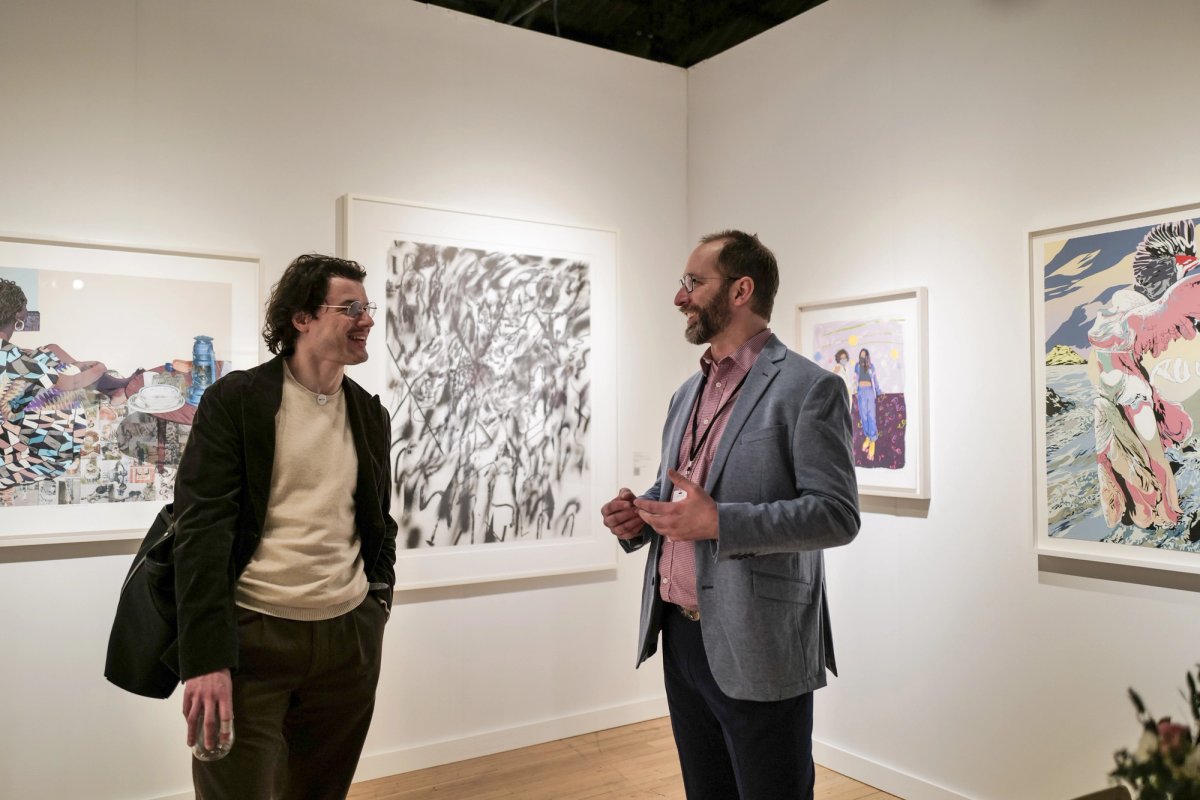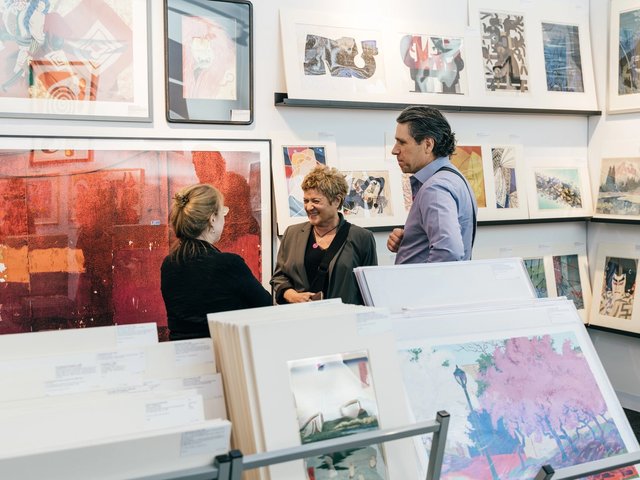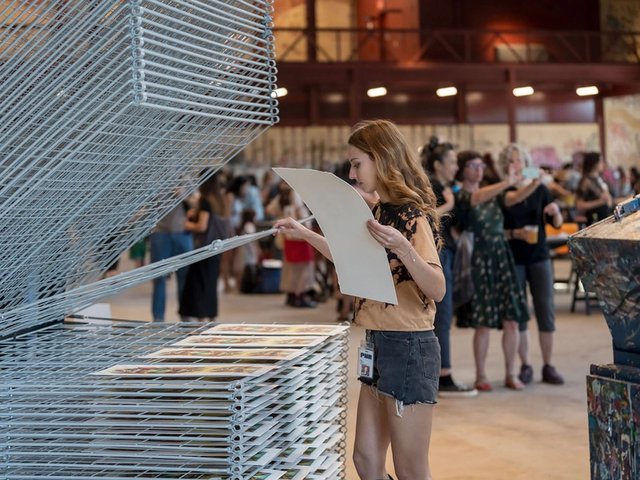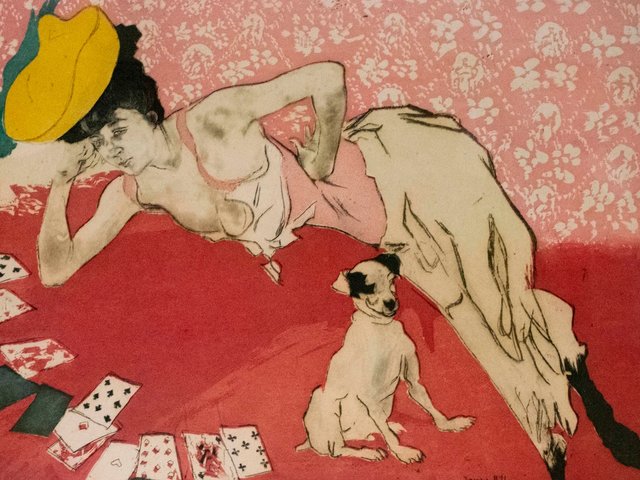Three years into a downturn of the global art market, fairs and dealers dedicated to prints say editioned works on paper are faring better than other media and have even managed to capture the attention of a new collector class. The phenomenon may have been on display best on Thursday (27 March) at the VIP preview of the annual International Fine Print Dealers Association’s (IFPDA) Print Fair (until 30 March). Just as busy as any other art fair held at the Park Avenue Armory, the aisles between the 75 stands were packed with attendees of all ages. More than 5,000 people turned up to the preview, according to fair organisers.
“Although there's been some softening at the top of the market, people look at evening sales and make these dire prognostications,” IFPDA executive director Jenny Gibbs tells The Art Newspaper. “What we're seeing in our segment of the market has been incredible growth. We had more applications for this fair than we have had in many, many years.”
The fair saw a 40% rise in ticket sales and a 50% rise in VIP registrations ahead of the event, organisers said. (Gibbs adds: “So I've ordered 50% more champagne than we had last year!”)
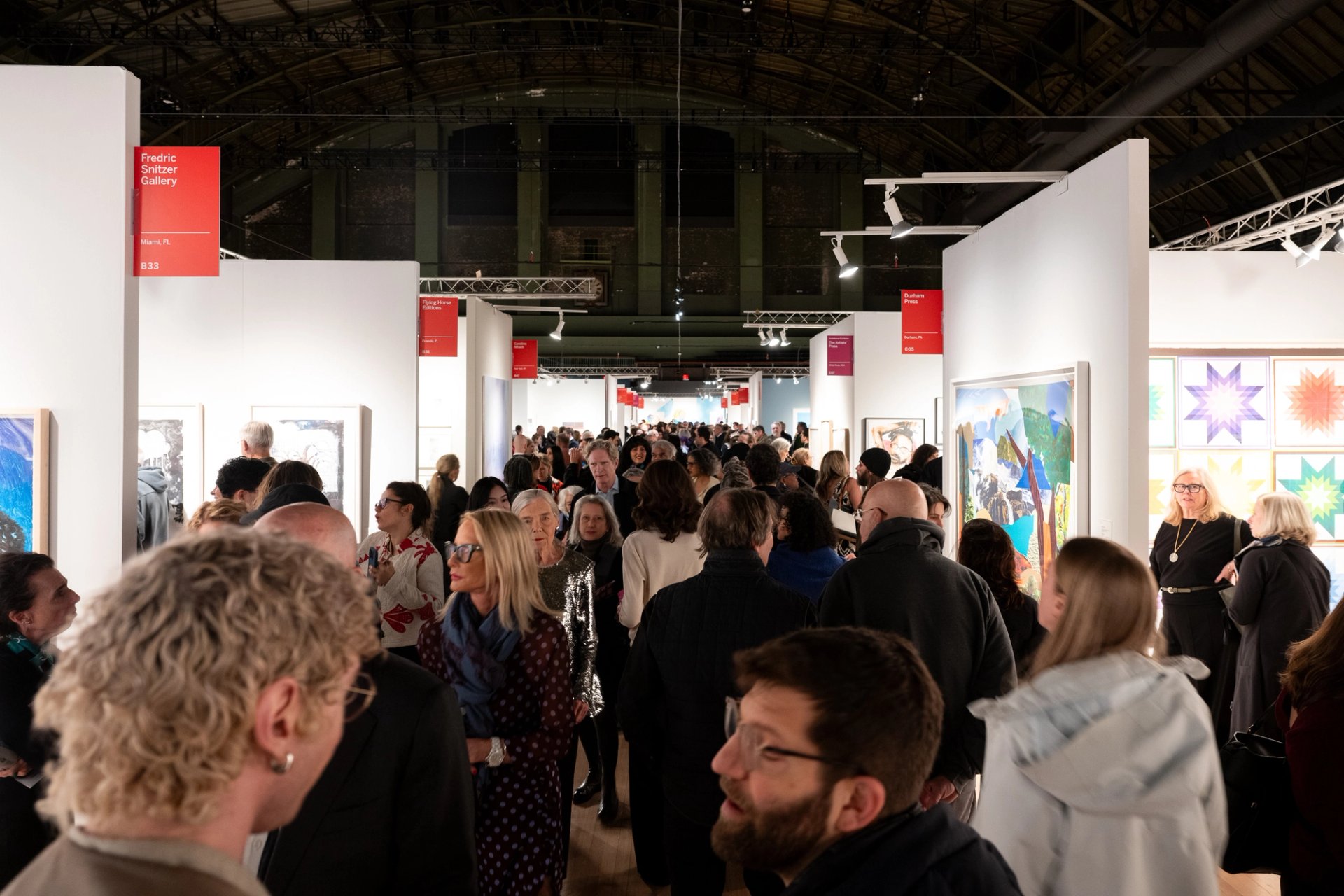
IFPDA Print Fair 2025. Photo by Rommel Demano / BFA
According to the most recent annual UBS Survey of Global Collecting, 35% of high-net-worth individuals polled acquired prints and multiples in 2023 and the first half of 2024. What’s more, prints, multiples and photographs made up 24% of their collections, up from 16% the previous year. ArtTactic also reported an 18.3% increase in print sales in 2023.
Gibbs attributes much of this growth to the entrance of younger collectors to the market, and their comfort with acquiring editioned objects of all sorts, from prints to sneakers. (Moving the fair from the Javits Center to the Park Avenue Armory last year also helped boost attendance, she says: “Speaking as a New Yorker, no one is happy to have to go to the Javits.”)
“It’s the idea of the democratisation of the art market, and the idea that you can collect a KAWS figurine—perhaps not a 40ft-tall KAWS figure, but a smaller editioned work,” Gibbs says. “That is an area in which we've seen a huge growth.”
That translates to prints and works on paper, she says, and the IFPDA fair allows both newer and seasoned collectors to consider work by established artists at more accessible price points, also a plus in a down market. This year's fair features works spanning nearly 600 years, and galleries from North America, Europe and one exhibitor, The Artists' Press, from South Africa. The IFPDA commissioned the artist Mickalene Thomas to create a site-specific installation made out of three-dimensional paper-pulp sculptures that allows the viewer to step into the artist’s interior scene paintings.
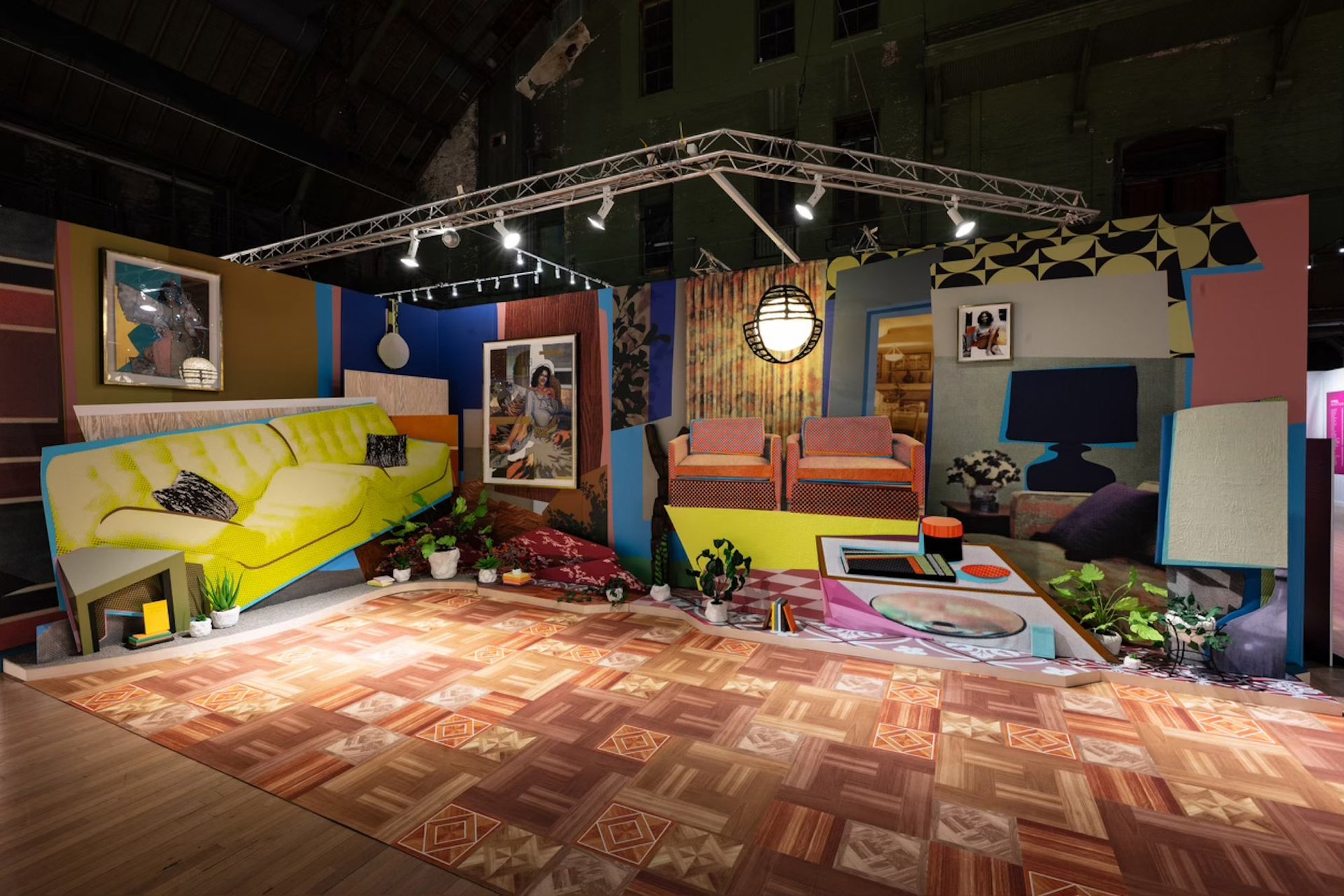
Mickalene Thomas, l’espace entre les deux, 2025, installation view at the IFPDA Print Fair Photo by Dal Perry
The IFPDA Print Fair is not the only event tapping into prints’ popularity in New York this week—also on Thursday, the inaugural Brooklyn Fine Art Print Fair (until 30 March) held its preview across the East River. Held at the Powerhouse Arts non-profit facility in Gowanus, the fair welcomed 600 VIP guests, organisers said. Exhibiting at the Brooklyn fair are 41 galleries, 28 self-representing artists and book makers, as well seven academic print departments. Organisers said exhibitors reported “healthy and consistent sales” during the preview.
If there is anything that other segments of the art market can learn from prints, it’s diversifying their collector bases.
“The IFPDA has been a beloved, must-attend fair for ‘print people’, and it tended to be a more inward-looking group,” Gibbs says. “We have made huge inroads into new collectors and younger collectors—we're definitely seeing more Gen Z and Millennials.”


